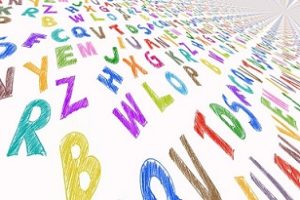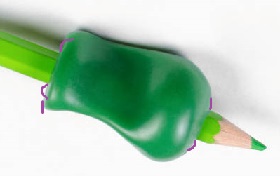Dyslexia and Early Literacy, Post
- On Nov, 15, 2022
- Tutoring Primary
- Blog
Dyslexia and Early Literacy
Dyslexia and Early Literacy offers hints on how to improve the teaching of dyslexic students.
Explain to the student that
- Our alphabet has twenty six letters.
- And there are other alphabets that have more letters.
- As we only have twenty-six letters, fifty two if we include capital letters, we use them in combinations to create other sounds such as ‘th’ and ‘oa’.
- The letter ‘y’ acts as the vowel ‘i’ more often than a consonant. So we have A,E,I,O,U and Y as vowels.
The quality of the graphite in grey lead pencils seems to be lower than it used to be. Good quality graphite will glide over the paper. Hard to find anymore.
 For Dyslexia and Early Literacy:
For Dyslexia and Early Literacy:
~A child, even a young child, may find a pen easier because it has less friction with the paper.
~A grip on the pen may also help. Keep trying different grips if necessary. They’re all different.
~Recently, I tried a short pencil (half length) with a child who had difficulty using a pencil. This child found it much easier to use. Less weight to move around! It’s worth a try.

- For dyslexic children, texts need to be in bigger type so they can differentiate letters more easily. Lesson packs on this site are in 16pt (Arial typeface) up to Year 5.
- Use Dr Jon Lieff’s suggestion of making bigger spaces between words http://www.searchingforthemind.com/
Helpful hints on teaching letter formation
- With all children, writing skills lag behind reading skills so lower expectations. Model good writing style at all times and be consistent.
- Reinforce learning of small letters first. Make sure the stem on ‘h’ and ‘d’ and the others makes the length of the letter double. The same applies to letters with a tail such as ‘p’ and ‘g’ as the tail should also double the length of the letter. This should help your child differentiate the letters. Many writers, even teachers, make the stem and tail too short and I think this adds to children’s inability to differentiate letters. An ‘h’ should not look like an ‘n’.
- Explain to your child that the way some letters appear in books and magazines is different from the way we write those letters. Good examples are ‘a’, ‘g’ and ‘y’.
- Reinforce the hand-writing style by drawing it in the air and then writing the letters on paper.
There are other posts with support and advice. Try: Teaching the Dyslexic Child, Post, Teaching the Dyslexic Child No 2
Fair use/dealing claimed on pictures.
Post Tagged with : early literacy, hints and help, learning difficulties, literacy, research, teaching methods
Your Lesson Packs